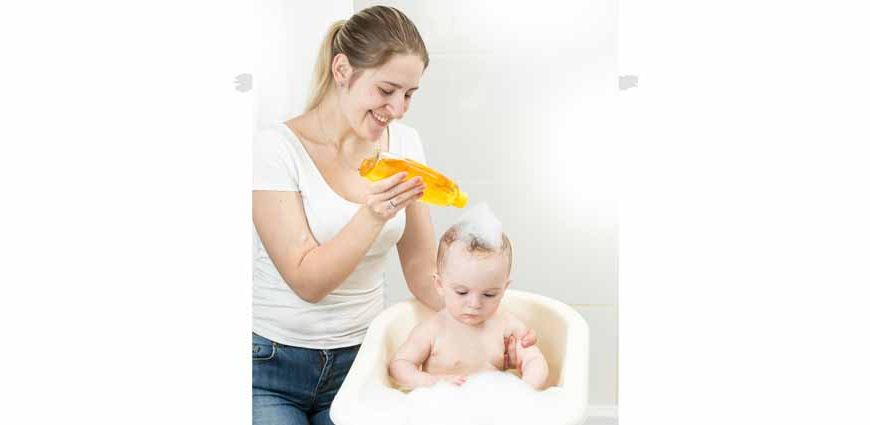The baby bath is, indeed, an enigmatic ritual. The right water temperature for a baby’s bath can feel like a perplexing puzzle, a delicate dance of warmth and safety. Bath time is an opportunity for bonding, for relaxation, for the gentle whisper of water against tender skin. But what is the safe and right temperature for a baby bath? Today, we will dive into the labyrinth of the ideal bath water temperature for babies and toddlers.
The conundrum of choosing the right water temperature for a baby bath cannot be overstated. Babies, you see, are a delightful mystery. Their skin, so delicate; their body temperature regulation, not yet fully developed. This makes it all the more crucial to find that perfect bath water temperature for babies.
So, let us embark on this enigmatic journey together. Let us uncover the secrets of the ideal bath water temperature for babies and toddlers. For babies, the recommended water temperature is a balmy 37 to 38 degrees Celsius. This temperature range is akin to the average human body temperature, making it a comfortable oasis for your little one. For toddlers, the bath water temperature can be cooler – 36 to 38 degrees Celsius. This allows them to acclimate to a broader range of water temperatures as they grow.
Did you know that a baby’s bath temperature can impact their skin and overall health?
“Always draw the bath for the baby and check the water temperature before gently plopping them in. Never turn on the tap or run the water while your baby is in the bath. A sudden burst of hot water could cause burns.”
– Karen Gill, Noreen Iftikhar at Healthline
4 Easy Ways to Maintain the Right Baby Bath Water Temperature
But how, you may ask, can one ensure that they have reached the right water temperature for a baby bath? Fear not, for there are several ways to attain the perfect bath temperature for your little one:
- Digital thermometers
- The elbow test
- The mixing method
- The hand sweep
These wondrous devices are crafted specifically for measuring the bath water temperature for babies and toddlers. With their ease of use, accuracy, and swift temperature readings, digital thermometers are a valuable ally in your quest. Moreover, their delightful designs – floating ducks, playful characters – serve as both thermometer and bath toy while maintaining the right temperature for a baby’s bath.
If you find yourself without a thermometer to measure the temperature of water, fear not! Using your elbow as a guide is a time-tested technique that has been employed to maintain the right temperature for a baby’s bath.
To use this method, simply submerge your elbow in the water you wish to check. If the water feels pleasantly warm to your elbow, but not hot, then the temperature is likely just right. Maybe not as precise as using a thermometer, but it can serve as a reliable gauge.
The reason this method works is due to the sensitivity of the skin on your elbow. This is because the skin on your elbow is thinner and has a higher concentration of nerve endings. As a result, your elbow can detect even slight differences in temperature, making it a useful tool for testing water temperature.
Did you know that a baby’s bath temperature can significantly impact their comfort and safety during bath time?
When filling the baby bath, always begin with cold water, gradually adding hot water to reach the desired temperature. This practice helps prevent scalding accidents by ensuring the water is never too hot from the outset. Further, the mixing method is also efficient in maintaining temperature for babies’ baths.
As you mix the water, continuously run your hand through it to detect any hot or cold spots. This ensures an even temperature throughout the bath, thus providing a comfortable experience for your baby.
8 Tips & Safety Measures for Bath
Now that we have unveiled the secrets of achieving the right water temperature for baby bath, let us delve into some essential safety tips:
- Test the water temperature before your baby’s immersion into the bath. This prophylactic measure ensures that the water is at a safe and comfortable temperature for your little one.
- Never abandon your baby or toddler unattended in the bath. Even with the perfect water temperature, accidents can occur. Remaining within arm’s reach is the key to their safety. This is a crucial step to remember while maintaining baby bath water temperature.
- Adjust your home’s water heater settings to prevent scalding accidents. Most water heaters possess temperature settings, so ensure it is set to a safe level – typically, 49 degrees Celsius (120 degrees Fahrenheit). In this manner, maintain the right baby water temperature.
- Cultivate a warm and draft-free bathroom environment during bath time. This helps maintain a comfortable baby water temperature and prevents chilling when they emerge from the water. Close windows, deactivate fans, and employ a space heater if necessary to achieve this cosy ambiance.
- Swaddle your baby in a warm towel immediately after their bath. This practice helps maintain their body temperature and prevents them from becoming too cold from baby water temperature.
- Observe your baby’s comfort during the bath. Shivering or cold skin may indicate that the water is too cool, while discomfort or flushed skin may signal that it is too hot. Adjust the temperature accordingly to maintain their comfort.
- Educate older siblings and caregivers about the importance of proper bath water temperature for babies and toddlers. This ensures that everyone involved in your child’s care appreciates the significance of maintaining a safe and comfortable bathing environment. Further, education on maintaining the right baby’s bath temperature is very important to prevent potential risks for the baby.
- Be mindful of bath toys and other objects in the water, as they can impact the temperature. Metal toys, for example, can become hot when submerged in warm water for an extended period. Always check the temperature of any objects before allowing your baby or toddler to play with them during bath time.
Conclusion
In conclusion, the journey to discovering the safe and right water temperature for baby baths is a winding, enigmatic path. Finding the right water temperature for a baby bath can take a bit of trial and error. You may create a calming haven for your child by keeping the bath water temperature for babies between 37 and 38 degrees Celsius and for toddlers between 36 and 38 degrees Celsius. Utilise thermometers, the elbow test, and unwavering supervision to ensure a safe and enjoyable baby bath experience for both you and your child. And remember, with the right temperature, bath time can be a moment of bliss, a delightful respite, and a bonding experience that both you and your baby will cherish.
We hope that this blog was insightful and helpful. At Eurokids, we understand the challenges of raising a child and are with you in the journey of raising a confident and healthy child. For more such tips and topics on parenting, head to our blogs section!
Which of these tips are you going to practise today to ensure a safe and comfortable bath for your baby?
For informative and accurate articles on all things related to your new born-toddler’s development, growth, health and nutrition, follow EuroKids Blogs and do check out our nationally recognized preschools – EuroKids for the first step in your kid’s educational journey!















